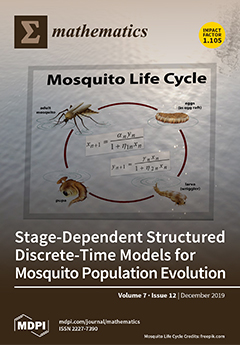The present paper studies the fixed point property (
FPP) for closed
k-surfaces. We also intensively study Euler characteristics of a closed
k-surface and a connected sum of closed
k-surfaces. Furthermore, we explore some relationships between the
FPP and
[...] Read more.
The present paper studies the fixed point property (
FPP) for closed
k-surfaces. We also intensively study Euler characteristics of a closed
k-surface and a connected sum of closed
k-surfaces. Furthermore, we explore some relationships between the
FPP and Euler characteristics of closed
k-surfaces. After explaining how to define the Euler characteristic of a closed
k-surface more precisely, we confirm a certain consistency of the Euler characteristic of a closed
k-surface and a continuous analog of it. In proceeding with this work, for a simple closed
k-surface in
, say
, we can see that both the minimal 26-adjacency neighborhood of a point
, denoted by
, and the geometric realization of it in
, denoted by
, play important roles in both digital surface theory and fixed point theory. Moreover, we prove that the simple closed 18-surfaces
and
do not have the almost fixed point property (
AFPP). Consequently, we conclude that the triviality or the non-triviality of the Euler characteristics of simple closed
k-surfaces have no relationships with the
FPP in digital topology. Using this fact, we correct many errors in many papers written by L. Boxer et al.
Full article





